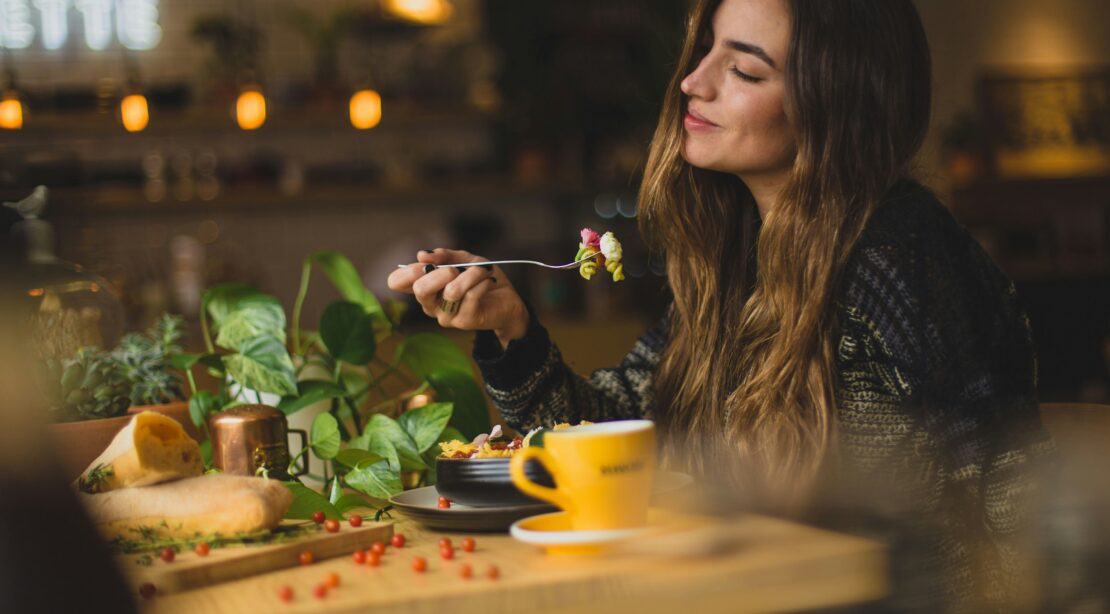This article is about how and why eating at home is the ‘It’ culture now.
People everywhere—ladies, guys, everyone in between—are turning their apartments into mini luxury hubs.
Why?
It’s not that restaurant food got bad, or that the ambiance went downhill. It’s just, the entire ritual isn’t as thrilling.
The wait times, the overpriced menu that makes you think you could’ve ordered better on an app, the forced socializing when you’re probably already tired—none of that is appealing anymore.
For a lot of younger people, dining out isn’t a casual thing anymore; it feels like it’s become an event that you only want to put up with if you get something from it—like a cool aesthetic photo for your socials.
Or maybe a unique dish you can’t get elsewhere. Even then, half the thrill is gone when you know you can get almost anything delivered straight to your couch, in sweats, while watching Netflix.
The economy’s been a hot mess, leaving many without those cushy formal jobs that once allowed them to live it up at fancy restaurants or posh hotels.
The old days of going out on dates, dropping cash at high-end spots? Well, those are now lore.
We are buying luxury, still, but this time, in a way that sticks. No more fleeting experiences anymore, this generation is about creating spaces we wake up to every day.
You don’t even have to leave your apartment for a luxe meal. You get to have breakfast, lunch, and dinner, whipped up by top-tier chefs and delivered right to your apartment. Sustainable indulgence, right at home.
In this article
What is “elegant” dining?
When people hear “elegant” dining, they usually think of a refined, high-end experience.
This means sophisticated ambiance—dim lighting, tasteful decor, maybe soft classical or jazz music in the background. The service is attentive but discreet, with staff anticipating needs without hovering.
The food is meticulously plated, often with creative presentations, and the menu features gourmet, often seasonal ingredients.
There’s usually a curated wine list, and attention is given to every detail, from the table settings to the pacing of the meal. It’s an experience where quality and luxury are center stage.
But many are now quietly dismissing that traditional notion of “elegant” dining, shifting the focus away from formality and exclusivity.
They’re more into experiences that feel authentic, relaxed, and sometimes even a bit quirky, but still with high-quality food.
Instead of stuffy, white-tablecloth restaurants, they’re drawn to places with a chill, refined aesthetic—think trendy pop-ups, farm-to-table spots, or restaurants with a strong narrative behind the cuisine.
The aesthetics still matter, but it’s more about being Instagrammable or having an intimate, communal feel than adhering to old-school luxury.
Casual sophistication is in—craft cocktails in mason jars, shared plates, food trucks with gourmet menus, or dining in unexpected, unpretentious settings. It’s about accessible elegance without the rigid decorum.
Elegant dining now means eating comfortably within your means and enjoying it as if every meal is the very best in the world, and not just to fill your belly and satisfy a hunger.
The elegance in eating at home has been re-defined by blending minimalism with a personal, curated touch.
It’s a lot less about recreating a fancy restaurant experience, and more about making their own spaces feel chic and intentional.
They’re into high-quality ingredients sourced locally or from specialty stores, simple but flavorful recipes, and thoughtful presentation.
You’ll see sleek, modern dinnerware, artisanal linens, or handmade ceramics—things that bring both style and personality to the table.
They’re not interested in fussy, multi-course meals; instead, it’s more about laid-back sophistication, like charcuterie boards with gourmet cheeses or cooking a dish that feels elevated but is still approachable.
The idea of elegance is now tied to quality over extravagance, and the focus is on creating a vibe that feels both effortless and meaningful.
How did elegance in dining evolve into a more casual, at-home thing?
Elegance used to be tied to fine china, exclusive guest lists, multiple courses, and a waiter delivering everything.
Now, you might order from a Michelin-star restaurant’s delivery service or handpick specific ingredients from a specialty grocer that you prepare yourself.
Elegance is defined by how you turn your living room into a semi-private lounge with dimmed lights, a comfortable chair, and your favorite drink nearby and by you setting an ambiance that matches your personal sense of sophistication—minimalist, clean aesthetic or something more eclectic.
The shift didn’t just happen because people want to choose what to eat and when—that’s the most obvious part. It’s more about rejecting the limitations of public dining spaces.
At home, you control the social environment entirely—no dealing with strangers, forced interactions, or waiting for your table.
You decide on every detail: eating in silence or with loud pop rock, dressing in pyjamas and going barefoot, and enjoying your food without the expectations of polite conversation that restaurant culture imposes.
What, about having meals delivered to your apartment, whispers “elegant”?
Uh, room service?
Nothing about ordering meals from Pret A Manger or Nando’s whispers “elegant” in the classic sense, but we now infuse a sense of personal elegance into the experience to make it so.
Plating it on sleek diamond-cut disposable dinnerware from the LuxeEmpress collection, paired with glimmering rose-gold flatware from the EliteEternity series, it’s literally effortless.
You get to arrange the chicken wraps or peri-peri bites neatly, adding garnishes like fresh herbs or a sprinkle of microgreens.
Pairing the meal with a curated selection of inexpensive wines, perhaps a light Pinot Grigio or a Sauvignon Blanc from a local winery.
Or enjoying it on a sleek walnut dining table with soft linen napkins, maybe a modern ceramic vase holding a single flower as a centerpiece.
Dimmed lighting, candles, and maybe a curated playlist of lo-fi beats or soft indie tunes.
The entire scene transforms casual dining into a playful yet deliberate expression of redefined elegance.
Getting meals from restaurants and having gourmet food trucks swing by offices and apartments is pretty much standard these days.
But not long ago, no one really appreciated how nice it is to have Shake Shack or Chicken Inn drop off your lunch. What once felt a bit extravagant now feels perfectly natural.
You can just grab your elegant plates and utensils and enjoy a perfectly made meal without the hassle of cooking, messing up ingredients, or stressing over a recipe.
You can chill on your bed or couch and dig in!
You get some burritos or tacos from Chipotle, and elegantly lay the meal out on a woven rattan tray, no plates needed. Just a cozy rug, oversized floor cushions, and small serving bowls for salsa, chips, or extra toppings.
Soft string lights and a Meghan Trainor playlist to fill the space. The casual authenticity, paired with those small, intentional details, turns the simple act of eating takeout into something that feels more polished but still effortless.
What makes eating from the couch or on the bed acceptably ‘it’?
Eating on the couch or bed, as a twenty-something, works because you’re blending comfort with convenience, which lines up with how your life is probably moving right now—fast and flexible.
You’re not tied to a dining table ritual because your space is your own, and you’re prioritizing ease over formality. It also turns any meal into a relaxed, low-pressure experience.
The fact that it’s your go-to means it fits your rhythm—no need to explain or justify it beyond that.
Seriously, can we stop pretending we’re not completely drained all the time? It’s exhausting to put on a show for everyone from the moment we walk out the door until we finally get to chill at home.
And enough with trying to be all ‘proper’ like we’re in some fancy restaurant when life’s moving way too fast for that.
Sometimes, you just gotta dig in with your hands and really enjoy the food instead of fussing with a fork and knife.
With a couple of serviettes and a water dish somewhere close, you can enjoy a meal elegantly and still enjoy the company of you streaming series cast, whether they’re making you laugh or upsetting you with decisions that you know will cause drama for days.
In what ways are we refining eating from home to make it so in?
Scented candles, fairy lights, Michael Buble playing softly in the background, and the best company you could ever ask for: characters in your new fave tv show.
Dining at home has become a quiet rebellion against the constant noise of restaurant culture. Eating out often means enduring loud environments, crowded tables, and inflated prices.
What happened to restaurant dining and why don’t young people gravitate to it except for photo ops?
Restaurants are financially unsustainable for many young people. Wages haven’t risen enough to match inflation, and dining out feels like burning money.
A $20 burger hits differently when you’re paying rent in a city like New York, and suddenly, cooking at home or ordering delivery is smarter.
Plus, delivery services often have deals or loyalty programs that make it cheaper than going out.
There’s also the gig economy—people are juggling side hustles and unstable jobs, so dropping big money on food doesn’t feel as rewarding when you know that same cash could go towards savings or travel.
The ritual of dining out isn’t mentally stimulating anymore. Social anxiety, overstimulation from constant media, and a craving for instant gratification make the slow, drawn-out dining experience less appealing.
Younger generations are used to multitasking, quick dopamine hits, and having control over their time. Restaurant dining often means waiting, small talk, and sitting still—basically everything that clashes with how most people operate now.
Plus, the intimacy of dining with others can feel like too much emotional investment for something that’s supposed to be “just a meal.”
Ordering in or eating solo feels safer and less mentally draining.
The social scene has shifted from in-person to online. Relationships are maintained more through screens than across the table.
Group dining isn’t the same priority when you’ve got a constant digital connection with your friends. Plus, it’s become about status: eating at the latest trendy spot is more about being seen (or seeing yourself in your feed) than actually sharing a memorable experience with others.
It’s performative. We’re talking about Snapchats, Instagram stories, and TikToks. People want the memory of being there, but not necessarily the social connection that dining was originally meant to foster
The style of restaurant dining has changed. Formal, sit-down meals feel outdated and rigid compared to the fast, casual, or “grab-and-go” options that match the flexible, on-the-go lifestyle of young people. Food trucks, pop-ups, and street food offer more style with less pretense.
It’s cooler to snag something unique and mobile than to sit down at a place where the vibe feels curated for people twice your age.
Casual street style, minimalism, and convenience dominate the scene, and traditional restaurants with their tablecloths, courses, and long waits are increasingly out of touch with that laid-back, fast-fashion aesthetic.
The freedom of playing with flavors, textures, and presentation makes eating at home better than going out to a restaurant
Eating at home allows you to fully unleash the chaotic brilliance of mismatched textures and flavors. You’re the boss of weird contrasts and borderline absurd combinations.
Restaurants, as fun as they are, still have that pesky reputation thing going on—they want you to like the food, so they stick to predictable pairings.
No chef is out there serving fries with a citrus sorbet or piling mushrooms onto your cinnamon roll just to see if it works (don’t hate it till you try it).
But at home? You can explore the fringes, the awkward in-betweens where magic happens. The DIY spirit in your kitchen opens a whole world of “I wonder what that would taste like” without the fear of a side-eye from the waiter or your date secretly judging your sweet-and-savory Frankenstein dish.
Maybe you want a meal that balances three opposing textures in one bite—like a crunchy, gooey, and gelatinous madness. Or you’re curious if spicy peanut butter will work on literally anything (because why not, right?).
And presentation? Oh, honey, you can throw perfection out the window and embrace whatever makes you feel something.
We’re talking about plating with utter disregard for symmetry or turning your snack pile into a mountain of guilty pleasure. Or, if you’re a mood-aesthetic person, maybe your sandwich is a deconstructed, half-burned art piece that’s all about feeling rather than appealing.
Unlike a restaurant’s polished presentation, your food can look like a Jackson Pollock painting if that’s what speaks to you.
Also, food at home = zero judgment on portion size. Make a truffle risotto and dump a bag of Funyuns on it as a garnish. Who’s gonna stop you?
When you cook at home, it’s less about feeding yourself and more about this intimate, creative playground where no rule is sacred, and no combination is too bizarre.
Basically, eating at home is like dating your weirdest, most uninhibited self… restaurants are the polite dinner party guest in comparison.


